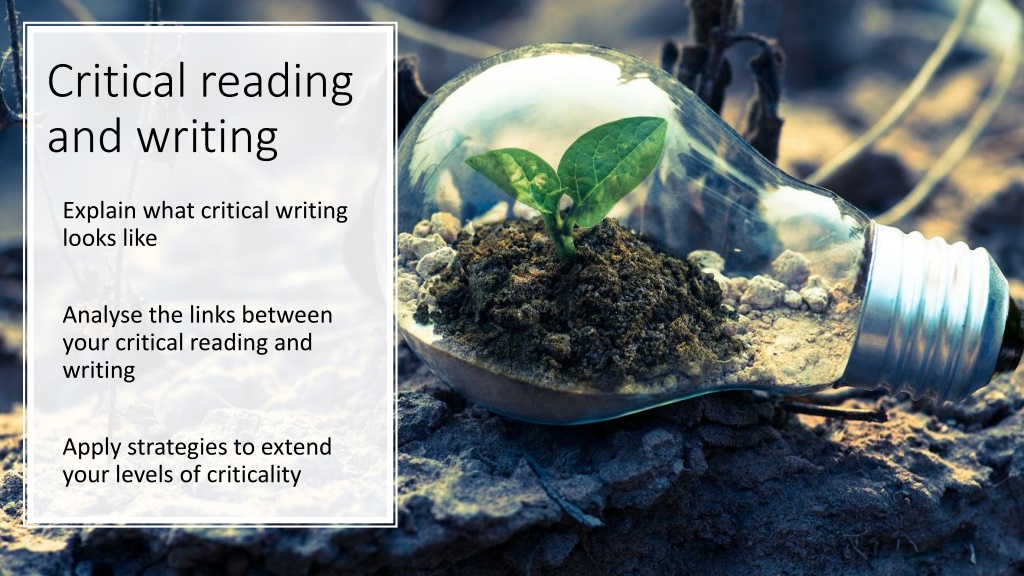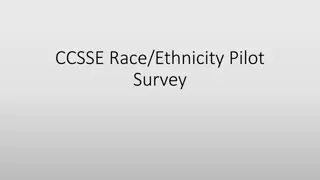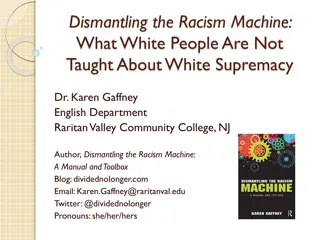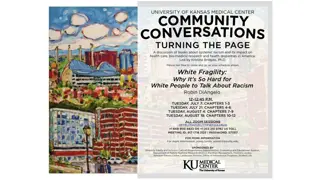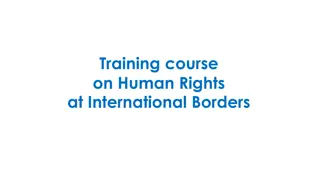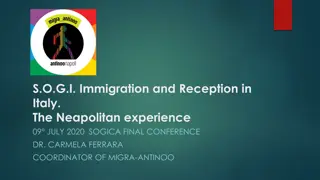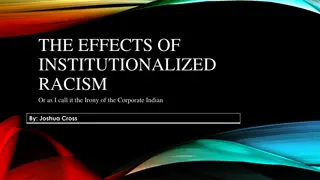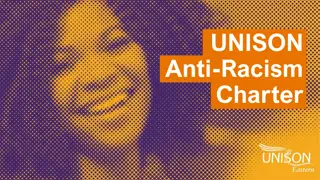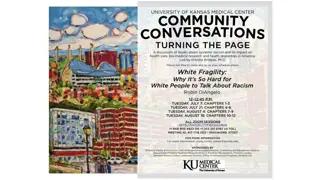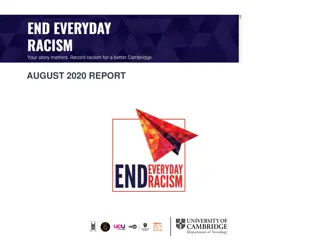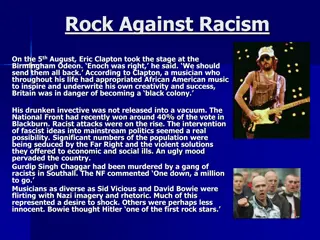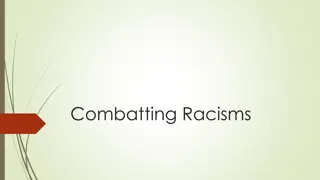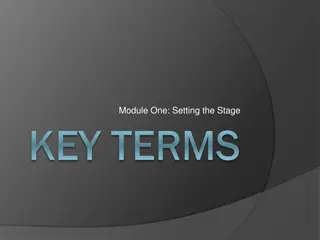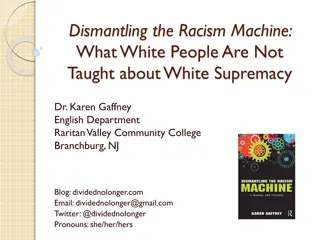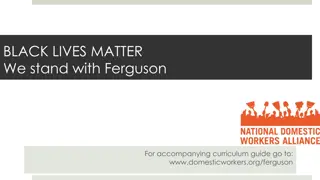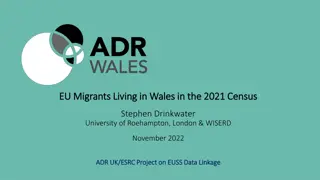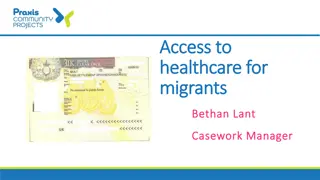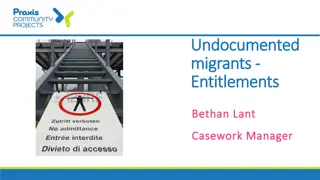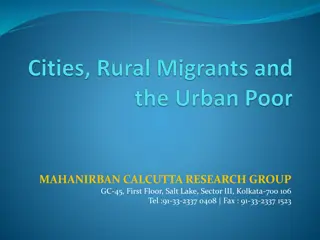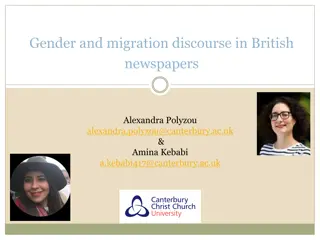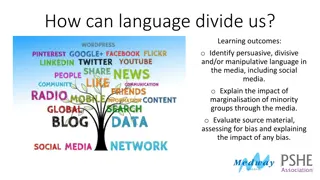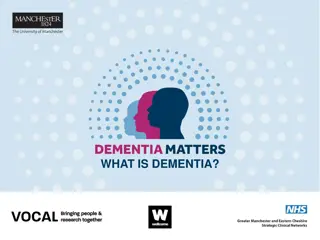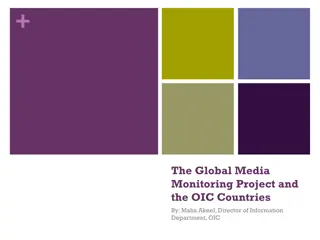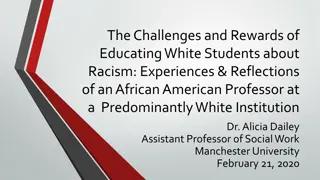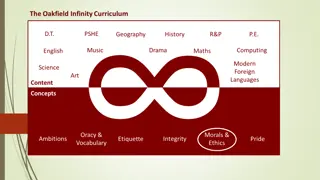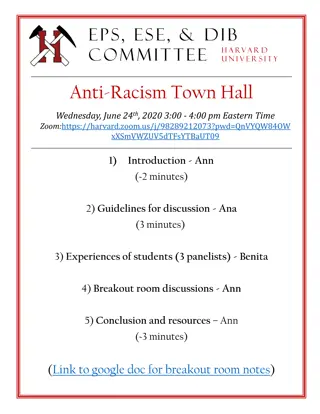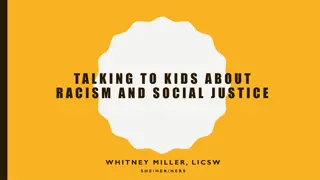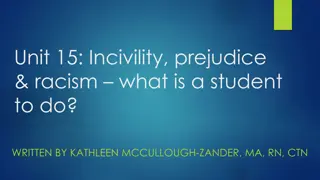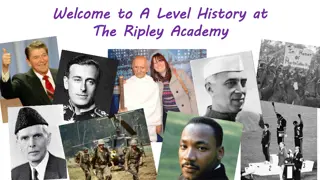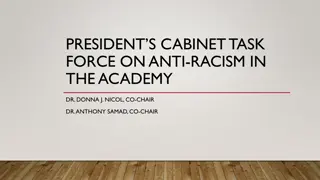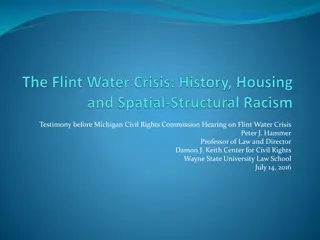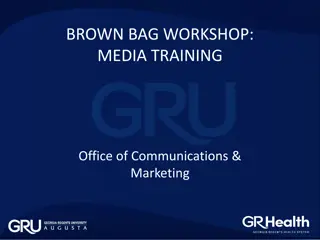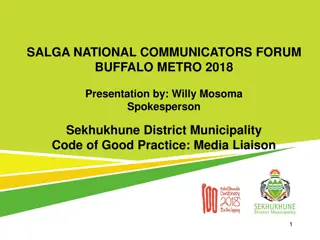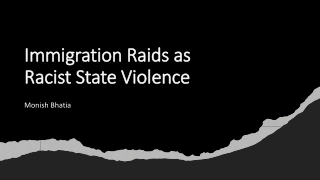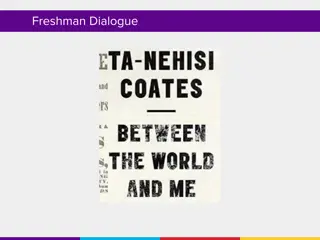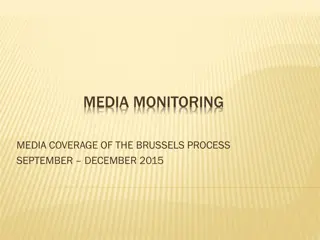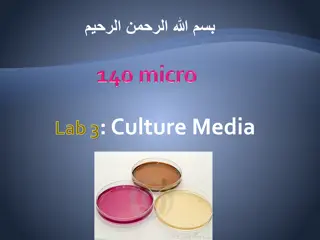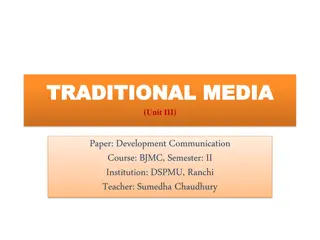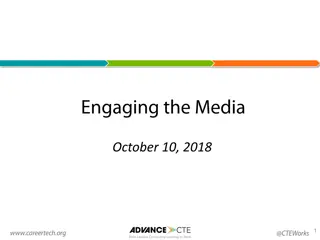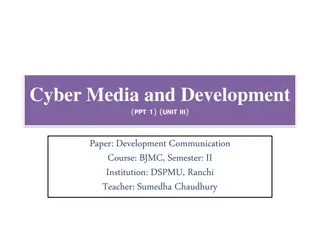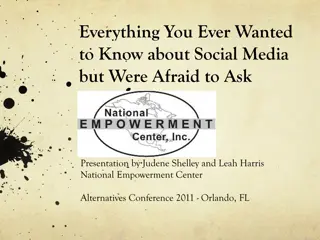Unveiling Racism in Media Portrayal of Migrants
The critical analysis delves into the pervasive racism embedded in UK media's depiction of migrants, highlighting how language choice and imagery dehumanize and alienate migrant populations. It exposes the dichotomy created between 'us' and 'them', shedding light on historical racist tropes and their detrimental effects on society.
Uploaded on Sep 30, 2024 | 0 Views
Download Presentation

Please find below an Image/Link to download the presentation.
The content on the website is provided AS IS for your information and personal use only. It may not be sold, licensed, or shared on other websites without obtaining consent from the author. Download presentation by click this link. If you encounter any issues during the download, it is possible that the publisher has removed the file from their server.
E N D
Presentation Transcript
Critical reading and writing Explain what critical writing looks like Analyse the links between your critical reading and writing Apply strategies to extend your levels of criticality
To get started Firstly, in pairs, read through the two versions of the paragraph from a previous student. Which is better and why?
Nevertheless, the portrayal of migrants and the blurring of identities (Syrian, European; refugees and economic migrants) points to a much larger problem endemic in the UK media: racism. The rich vocabulary, metaphorical disaster frames and animalistic allusions, serve to distort reality and dehumanise migrants. As Parker (2015, p.14) writes, they are represented as diverging from normality with racist images that have been historically used against ethnic minorities, and in direct contrast to the portrayal of the assumed non-migrant population of Britain which must be innocent, civil, hard-working and moderate in an effort to depict them as threatening outsiders who are not welcome. Weedon (2004, p.3) highlights how such racist tropes have been used against Black, Asian and other ethnic minorities throughout history. This use of language creates a dichotomy between Britons and migrants: us , we and our as put forth in the aforementioned articles suggest migrants are cultural outsiders who, therefore, need to be kept out (Cottle, 2000 p.5). As Genova (2018, p.1772) argues, while hostile coverage of the displacement of people took a momentary pause in the press following the death of toddler, Alan Kurdi, who was found drowned and washed up on a beach in Turkey in September 2015, the attacks that followed in Paris, November 2015, created a marked increase in the press depiction of asylum seekers and Muslims as it jumped to portray this pre- established ethnic Other as far more than different, but as a threat to security. Lacks comments about the meaning or significance of their reading. It is really a list of summaries. This results in some repetition too. Academic tone and style are good
Highlighting trends in the literature synthesises rather than listing summaries of each in turn recognises when the same point is made Nevertheless, the portrayal of migrants and the blurring of identities (Syrian, European; refugees and economic migrants) points to a much larger problem endemic in the UK media: racism. The rich vocabulary, metaphorical disaster frames and animalistic allusions, serve to distort reality and dehumanise migrants. They are represented as diverging from normality , as Parker (2015, p.14) describes, and in direct contrast to the portrayal of the assumed non-migrant population of Britain which must be innocent, civil, hard-working and moderate in contrast. Such racist tropes which have been used against Black, Asian and other ethnic minorities throughout history (Parker, 2015; Weedon, 2004 p.3). This use of language creates a dichotomy between Britons and migrants: us , we and our as put forth in the aforementioned articles suggest migrants are cultural outsiders who do not belong to our way of life and who, therefore, need to be kept out (Cottle, 2000 p.5; Parker, 2015, p.14). Consequently then, migrants are dehumanised for being different and unlike us , if not by skin colour, then by culture. As a result of rife Islamophobia across the continent, blanket assumptions and negative generalisations are made against all non-British and non-White communities in the tabloid press. As Genova (2018, p.1772) convincingly argues, while hostile coverage of the displacement of people took a momentary pause in the press following the death of toddler, Alan Kurdi, who was found drowned and washed up on a beach in Turkey in September 2015, the attacks that followed in Paris, November 2015, created a marked increase in the press depiction of asylum seekers and Muslims as it jumped to portray this pre-established ethnic Other as far more than different, but as a threat to security (Genova, 2018, p.1772). Therefore, although not a new depiction, the 2015 event ramped up the association, moving beyond a clash of civilisation to convey Islam as the enemy of civilisation itself . Showing understanding of the literature Some evaluation of literature Drawing out meaning, connecting ideas and moving towards an argument/conclusion
So, critical writing Synthesises literature: compares and sees links; doesn t just summarise. Shows meaning: relevance of information/ideas, what it tells you (suggests); doesn't just describe. Shows evaluation: weighs up strengths and weaknesses, argues and reaches a conclusion; doesn t take things at face- value.
Where do you start? Critical reading but establish your own position first.
Have a go Should statues of historical slave owners be removed from our towns and cities? What do you currently think and why? Establishing your own position helps you critically evaluate what you read and develop an argument. Then do your focused and critical reading.
Think of it as zooming in and zooming out when youre reading.
Zooming in Who is the author? Significant? Biases? What is the main argument? Do you agree? Why? Which methods are used? Appropriate and robust? What findings and conclusions are made? Does the evidence support the conclusion? What are the strengths and limitations?
Zooming out Make comparisons and connections Position key points against each other Compare methods Identify themes and trends Areas of agreement or disagreement
Have a go Should statues of historical slave owners be removed from our towns and cities? You have extracts from three newspaper articles on this topic. Read and start to make some critical reading notes using the critical questions on your handout. Really focus on whether reading any of them has changed or confirmed your original position. Why have they, or haven t they? How could they be used to develop your argument?
A reading grid reading grid keeps track of your note-making and your zooming out. zooming out. Reference Topic Key idea/theme Strengths/ Weaknesses How to use Comtrasts with Agrees with
Then all of that critical reading can lead to something like this: Reporting on the Black Lives Matter movement should be placed in the broader context of media debates concerning the Rhodes Must Fall Campaign and discussions about societal and cultural decolonisation. The Rhodes Must Fall Campaign started in South Africa as a protest to remove public commemorations of historic slave owners as representations of continued racial inequality (Chantiluke, 2018). While Hall (2018) is supportive of this, Sandbrook (2015) offers an alternative, considering such measures as historical vandalism . However, Sandbrook is known for his right-wing and nationalistic approach to history, which may limit his perspective and influence his reporting. Similarly, being a Black historian who specialises in the study of slavery, may overly influence Olusoga s (2016) analysis in The Guardian. Yet he offers a more nuanced argument that statues of slave owners should not be removed but some form of plaque that informs and questions its origin needs to be placed there. However, if we compare Oluusoga s 2016 article with one he wrote in June 2020, celebrating the toppling of the statue of Edward Colston in Bristol, we see that more current influences, such as the murder of George Floyd, may be affecting his media commentary.
Transitioning and signposting words They help you show synthesis and analysis. See more: http://www.phrasebank.mancheste r.ac.uk/summary-and-transition/
Use your critical voice X is not wholly persuasive because ___________ X s theory of ___________ is extremely useful because it sheds insight on the difficult problem of ___________ See more: https://www.phrasebank. manchester.ac.uk/being- critical/ This suggests that ___________ Conversely, it could be argued that ___________
Use WEED paragraphs What is your paragraph about? Explanation: what do you mean? Offer some explanation, maybe from your reading. Examples: illustrate your point with examples from your evidence. Do: What do I do with this information? Keep thinking So what? Your analysis.
So, are you ready now to recognise critical writing? Using your handout, in your groups, discuss where and how the student has shown their critical reading in their writing and then share your ideas with the whole group. If you can see it, it s much easier to achieve it.
Since 2012, the Teachers Standards have included the professional requirement to not undermine British Values (BV), and since 2014, the government has actively encouraged educators to promote these (DfE, 2012, 2014). However, this is not without controversy. For example, both Moncreiffe and Moncrieffe (2019) and Chalcroft et al. (2017) argue that the policy may encourage racism and discrimination. Although Moncrieffe and Moncrieffe (2019) suggest adapting its application to reflect multiculturalism, Chalcroft et al. (2017, p. 29) have a more oppositional stance to the policy as a whole and view it as further evidence of the politicisation of the profession . While this may be due to their anti-Conservative government political agenda, the problematic nature of implementing government policy unquestioningly is also well illustrated by the Northern Irish context. Indeed, it has been said that it contradicts Northern Irish specific policy, such as Shared Futures (2005), by failing to accommodate deeply felt differences in identities rooted in Northern Irish history and culture (McCully and Clarke, 2016). It is not clear, however, if McCully and Clarke (2016) identify themselves as British or Irish; if Irish, they may be biased against any policy requiring them to define and promote Britishness , which could influence their arguments. They do, though, raise a potentially important point about identity across all of the UK s nations, which is furthered by Moncrieffe and Moncrieffe (2019) highlighting the specifically English nature of Britishness displayed in many primary schools. Therefore, for some parts of the UK, the notion of British Values is inappropriate, as well as potentially prejudicial against pupils of minority faiths and cultures. This suggests that government policy may undermine primary teachers desire to be inclusive in the classroom and encourage discrimination in schools, as well as being a challenge to their own identities. The requirement to promote British Values, then, indicates that government policy may not be nuanced enough to be effectively applied in all schools.
In your groups from earlier, write a couple of sentences about the articles that show critical analysis.
What piece of advice would you now give another student to help them improve their critical writing?
